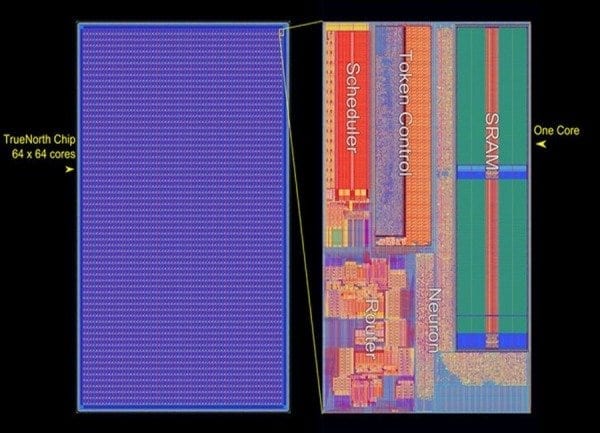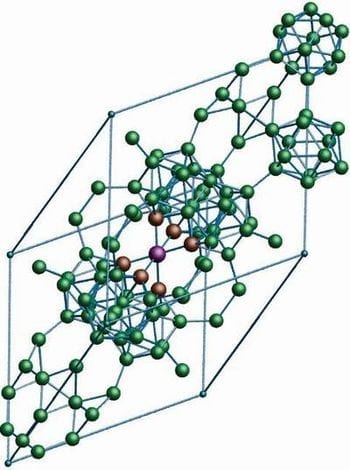
The Open Quantum Materials Database contains analyses of nearly 300,000 compounds
When researchers want to create better batteries, solar cells, and medical devices, they often look for answers in new materials. Materials with optimal properties can improve existing technologies and spark ideas for new ones. But finding materials that have just the right properties can take many years of trial and error.
“Suppose you want to find a material that would make a good solar cell, but you don’t have a design strategy,” said Christopher Wolverton, professor of materials science and engineering. “You would have to explore in the dark.”
Wolverton’s group in Northwestern’s McCormick School of Engineering and Applied Science has created a database that takes some of the guesswork out of designing new materials. The team performed systematic analyses of both known and imagined chemical compounds to find their key properties and established a database of the results. Called the Open Quantum Materials Database (OQMD), it launched in November and is the largest database in the world of its kind.
So far, the OQMD contains analyses of 285,780 compounds and continues to grow. Northwestern’s high-performance computer cluster, Quest, was used to construct most of the database, which is available and can be downloaded online. The original paper about the project, “Materials Design and Discovery with High-Throughput Density Functional Theory: The Open Quantum Materials Database,” was featured in the November 2013 issue of the journal JOM.
The purpose of the OQMD is to identify candidate materials for specific applications by screening them for various properties before they are tested in the lab. This dramatically accelerates the search, narrowing down candidates for possible materials to a mere handful that require further experimentation.
“The calculations are faster and easier with less cost than conducting experiments,” Wolverton said. “And it’s all on computers, so users can explore things—like toxic elements and radioactive elements—that they probably wouldn’t want to do in their labs.
Read more . . .
The Latest on: Open Quantum Materials Database
[google_news title=”” keyword=”Open Quantum Materials Database” num_posts=”10″ blurb_length=”0″ show_thumb=”left”]
via Google News
The Latest on: Open Quantum Materials Database
- Analysts Offer Insights on Materials Companies: First Quantum Minerals (OtherFQVLF), Methanex (MEOH) and Newmont Mining (NEM)on April 26, 2024 at 3:40 am
Analysts have been eager to weigh in on the Materials sector with new ratings on First Quantum Minerals (FQVLF – Research Report), Methanex ...
- Analysts Offer Insights on Materials Companies: First Quantum Minerals (OtherFQVLF) and MAG Silver (MAG)on April 25, 2024 at 1:10 pm
Companies in the Materials sector have received a lot of coverage today as analysts weigh in on First Quantum Minerals (FQVLF – Research ...
- New Material Realizes Superconductivity in the Quantum Hall Regimeon April 25, 2024 at 8:55 am
Researchers at The University of Manchester have made a noteworthy advancement in the field of superconductivity by employing a recently developed one-dimensional (1D) system to successfully achieve ...
- Thermodynamics and Control of Open Quantum Systemson April 22, 2024 at 4:59 pm
Get access to the full version of this content by using one of the access options below. (Log in options will check for institutional or personal access. Content may require purchase if you do not ...
- Powerful New Tool Ushers In New Era of Quantum Materials Researchon April 17, 2024 at 5:32 pm
Professor Fabio Boschini and his team at QMI-UBC have highlighted the TR-ARPES photoemission technique. Research into quantum materials is leading to revolutionary breakthroughs and is set to propel ...
- Researchers control quantum properties of 2D materials with tailored lighton April 15, 2024 at 12:21 pm
A team of scientists has developed a method that harnesses the structure of light to twist and tweak the properties of quantum materials. Their results, published today in Nature, pave the way for ...
- Giant quantum tornado behaves like a black hole in miniatureon April 11, 2024 at 5:00 pm
Black hole in a blender: The experimental set-up the researchers used to create the giant quantum vortex, which mimics certain behaviours of black holes. (Courtesy: Leonardo Solidoro) A novel ...
- Nonvolatile quantum memory: Discovery points path to flash-like memory for storing qubitson April 5, 2024 at 5:00 pm
Rice University physicists have discovered a phase-changing quantum material—and a method for ... zeros of digital bits of information. In an open-access study published recently in Nature ...
- 'It's ultimately about predicting everything'—theory could be a map in the hunt for quantum materialson April 4, 2024 at 8:43 am
This knowledge could end up showing the way to sought for quantum materials with properties so unique that they could transform our world. These quantum materials are a prerequisite for digging ...
- Why Open Source Is Mandatory For Secure Communication In A Quantum Worldon March 29, 2024 at 3:45 am
To keep up with this challenge, we must future-proof our online communication with post-quantum encryption in combination with open-source software. As concerns about data breaches and cyber ...
via Bing News










